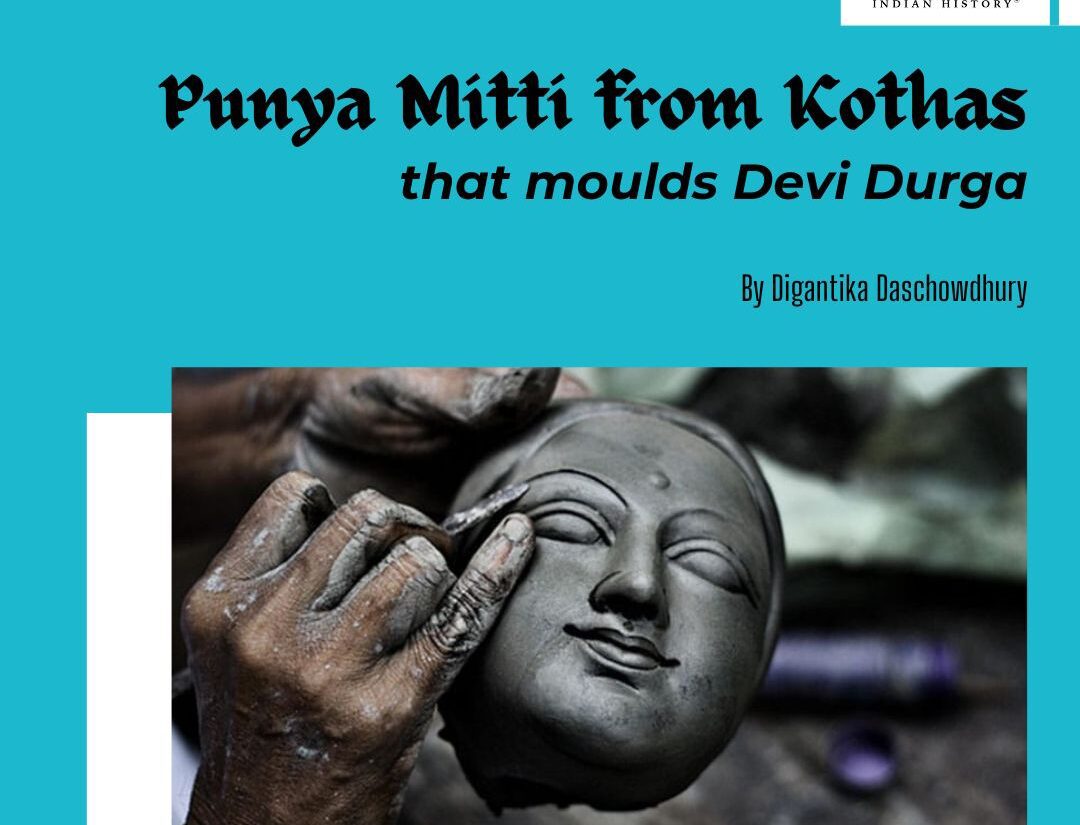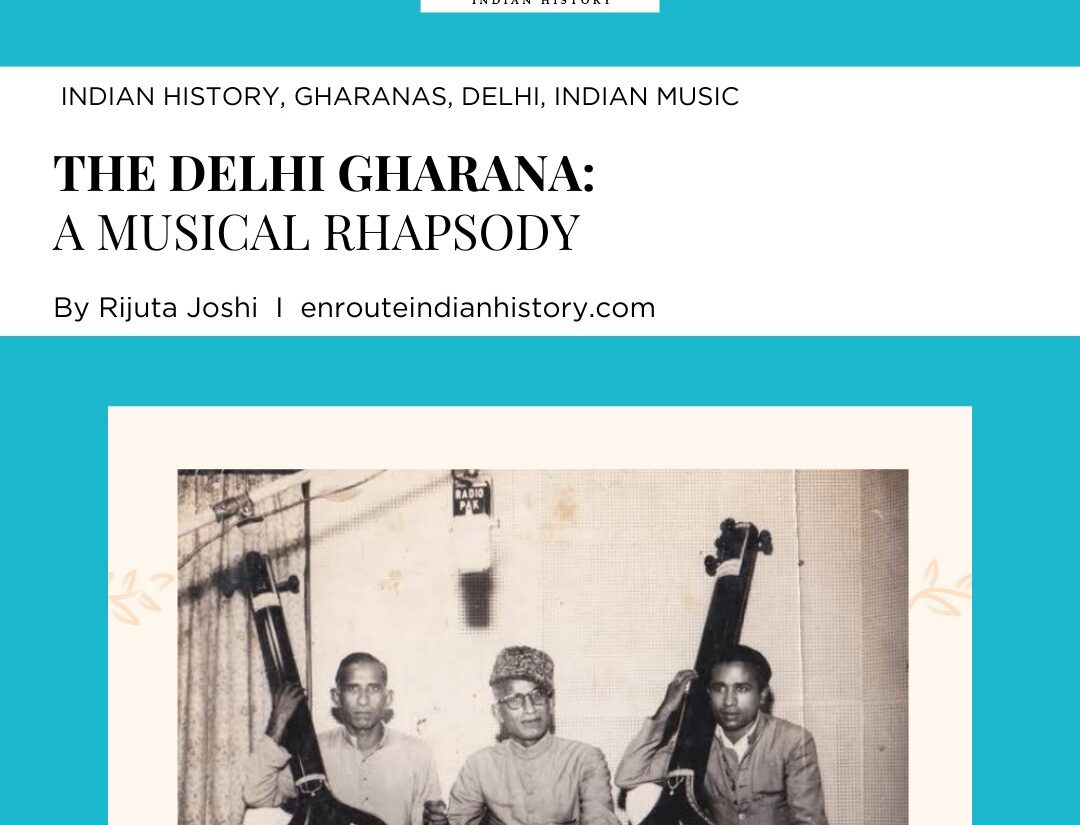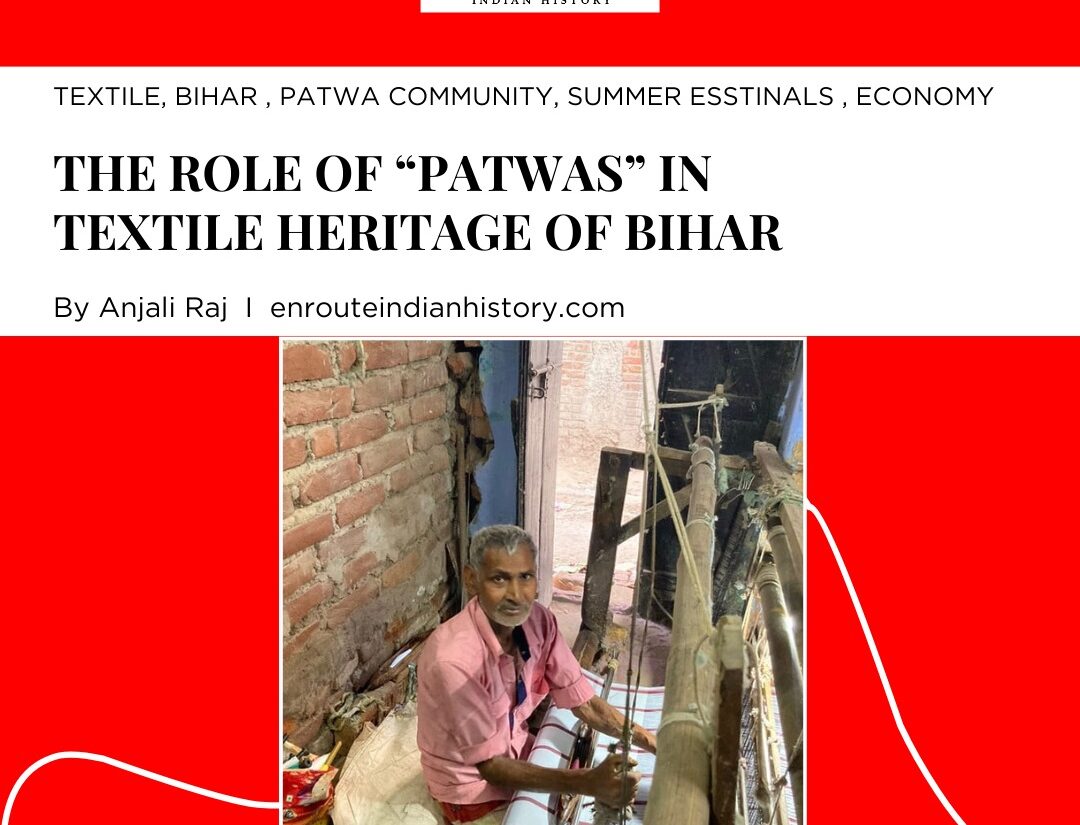
While the carnival of Durga puja is round the corner, artisans of kumortuli (a traditional potters’ colony in the northern part of Kolkata) are busy shaping the majestic ten-armed goddess and her family with punya mitti obtained from the brothels. They put in endless hours, days and months of toil and labour to concoct the beautiful ginormous idols of Devi Durga. The entire procedure demands both arduous efforts as well as assorted rituals, however this article will mainly focus on pre-craftsmanship of Devi and her connection to the brothels. Also ponder on the fact that why brothels which were looked down upon holds such eminence as to without the Kothas’ mitti the puja would be incomplete.

The claymodeller said 40-50 idols were made for overseas pujas in Kumartuli this year, unlike half of that figure last year | PTI Photo via Outlook
Alienated before, alienated now the women of Kothas mortified, subdued and commodified throughout the year excluding the days of Durga puja, the whole custom is filled with contentious sanctimony. A man works hard throughout his lifetime to earn respect from his fellows, in case of prostitutes no matter whatever they accomplish or do, perpetually deprived from a respectable stance. Occasionally approbation on ceremonial days is not enough to bring a change at the societal realm. Hence, festivities could not ensure perpetual respect or possie which they rightfully deserve. Sacred scriptures besides deities are produced as attorneys of such prejudices, to rationalize a manmade age-old credence.
It is perhaps one of the most unwarranted traditions alive in the modern world, throughout the year prostitutes are shunned and abhorred but as soon as Navaratri or Durga puja arrives, a flip coin transformation happens with them being acknowledged. The reason behind it, idol of goddess Durga is partially made from the soil collected from the Angans (abode) of Prostitutes, often called nishiddho pallis (restricted lanes), now the question arises that if their land is forbidden then why the soil is procured from Kothas also, holds such relevance resulting in priests begging for it. Certain versions of reasoning had been put forth by several readings from theologians, philosophers and scholars. According to legends maxim, when a man enters a kotha or brothel, he leaves behind his purity and veracity thus, all his purity lies right outside the abode within the soil.

Picture Courtesy : Unesco
Long before women were abused for their profession and treated in covert ways, prior to shoving them off in a corner, they had a reputable rank as a courtesan. At times were even deemed an artist, regarded highly since it was presumed that they had the most difficult job. Prior to the advent of the nineteenth century, the practice of acquiring soil was grasped to be an act of appreciation and remembrance to brothels and women residing there.
Some theologians are of the opinion that it might have epitomized feminine energy, the fable is referred to in that case. As the legend goes by, during the contest between Mahishasura and Devi Durga, an attempt was made by him to molest the divine power however, Devi Durga with her competency and wrath prevented him from doing so thus, emerged victorious against Mahishasura. Therefore, the use of soil from the Kothas is a sign to pay respect and revere to those downtrodden women who had been debased publicly, displaying that each woman can be a Devi Durga when time calls for. On the other hand, the modernists speculate this praxis a bit differently, according to them the punya mitti exhibits inclusivity. Though the destitute sections of society are shunned by all but it provides some sense of comprehensiveness within a societal structure, moderately hinting that prostitutes too belong to the world as much as the others. Not a promising or uplifting thought as felt by several women of brothels.
Some even went to the extent of demonstrating the ritual of acquiring punya mitti a sign of purification of character, which resulted in more resentment and ostracization. Another school of thought went on to declare that the punya mitti purged the prostitutes of their sins, supposedly their inclusion in idol making refines them with priests chanting mantras to unburden the souls of. Latest theories and speculations went further down which did not benefitted, rather demeaned their image more with time. None of the above theories are proven, still remains as one of the unsolved cultural enigmas.

In the famous movie Devdas, Paro visits the Kotha of Chandramukhi to collect some earth from her house.
Conclusion
There exist multiple ritualistic traditions, that we follow blindly today without even knowing its relevance or proper reasoning. This is an era where each tradition is obeyed, either due to scientific reasons or commercial benefits. The epochs blindfolded in beliefs and dogmas have rolled by giving way to the aeons of scientific prudence. This custom, that originated on the porches of the red-light area of Sonagachi is slowly fading away; though some idol makers do visit these places to collect the soil, on the onset of Dusshera. However, though the tradition is seeing its dusk in most of the north eastern parts of the country, it would require a little longer for the sun to set in Bengal. Unfortunately, this beautiful tradition has turned hypocritical with time and the true origin long lost and forgotten, lately people are just promoting and accentuating the plight of prostitutes for a brief moment. Over time, nothing has changed on the side of the courtesans; they still are the same old social pariah whose bodies corroborate with the mere needs of their stomach. Probably, as years have rolled by, it has become obvious that the rest of the world has become more adulterated and vicious. The tradition may be dying as men have no virtues to shed even before they visit “her” porches these days.
References
- Mazumdar B.C. Durga: Her Origin and History, The Journal of the Royal Asiatic Society of Great Britain and Ireland (Apr., 1906), pp. 355-362 (8 pages) Published By: Cambridge University Press. https://www.jstor.org/stable/25210252
- Bhattacharya Tithi. Tracking the Goddess: Religion, Community, and Identity in the Durga Puja Ceremonies of Nineteenth-Century Calcutta, The Journal of Asian Studies, Vol. 66, No. 4 (Nov., 2007), pp. 919-962 (44 pages) https://www.jstor.org/stable/20203237
- Ladage R. Why Is the Soil from Outside a Prostitute’s Home Used During Durga Puja? India.com (October 13, 2015 1:49 PM IST) https://www.india.com/viral/why-is-the-soil-from-outside-a-prostitutes-home-used-during-durga-puja-623016/
- Das Kumar S., Basak B. The Making Of Goddess Durga in Bengal, ResearchGate publishers (May, 2021)
https://www.researchgate.net/publication/351817042_THE_MAKING_OF_GODDESS_DURGA_IN_BENGAL
- Mohanty S., Das C. Secret & sacred embodiment of Goddess Durga idol, January 2016 Man in India 96(12):5747-5751, ResearchGate publishers, https://www.researchgate.net/publication/318966576_Secret_sacred_embodiment_of_Goddess_Durga_idol























